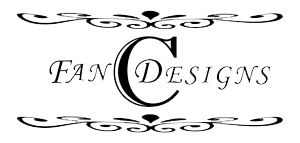To train or not to train; Guidelines To Follow When Choosing A Wedding Dress Train

The wedding dress train has existed since the dawn of weddings, but it lost popularity for a time. After Kate Middleton wore it for her royal wedding however, the popularity of the train is back in full swing and is now one of the top fashion trends.
Brides are usually confused about the appropriateness of a train with their dress and so we will be addressing the etiquette and styles of trains one should consider when choosing a wedding dress.
When is not appropriate to have a train?
There are times the use of wedding trains would not be recommended and they include the renewal of vows or for a bride’s second wedding. Wedding trains are usually reserved for first-time brides but rules are made to be broken so do what you feel is best for your wedding.
What wedding dress styles look best with a train?
Lots of people are curious about the type of wedding dresses that would be the best fit for a train. If the look and feel you are going for is ‘grandiose’ a ball gown style fits nicely with a lengthy train and grand wedding. When you match both ball gown with a train it gives a very classic look. But once again – this is not to say trains can’t work with other dress cuts.
Styles of trains
The major train styles include:
SWEEP

This is also known as the “brush,” this train was very popular in the 21st century, it is about less than a foot and half long, it barely touches the ground. This type of train is best suited for brides who are minimalist, who want to use trains without the stress of managing one. They are best suited for a casual laid back wedding.
COURT

This type of train is about the same train length as the brush train; the only difference is that the train starts from the waistline rather than at the hemline of the wedding gown. It changes the silhouette of the bride, so make sure you try it on to see if you like the way it looks.
PANEL

Panel trains are very convenient because they are easily detachable. The train isn’t a part of the dress, but separate. One can easily attach it the wedding gown and also the bride can decide how long or short the train should be. It is convenient in the sense that if a bride finds the perfect gown and she later decides she wants a train, it can be easily attached.
WATTEAU

This train style is very elegant; it gives the bride a Grecian look. The Watteau train alters the bride’s silhouette so it needs to be tried on to see if you like the look it gives you. The Watteau train drapes down from the shoulders to the bottom hem of the dress. Bridesmaids can also pull off this look. This type of train is usually suggested to brides who don’t want to cover their hairstyles but also want the look of a long flowing veil.
CHAPEL

This is the most popular type of train; it also changes the silhouette of the bride. The chapel train extends between 3 1/2 and 4 1/2 feet from the waist of the gown. This type of train gives a dramatic appearance and it can also be attached and detached depending on the choice of the bride.
CATHEDRAL

This type of train is like the chapel train taken to the extreme. They are more formal than most trains; it usually suggested that a cathedral length veil be used to finish this look. Keep in mind, the length of this train may be a bit difficult to manage – but they are really elegant.
MONARCH

This type of train starts from the waist and extends 12+ feet from the waist; they too can be a bit difficult to manage and may requires at least two people assistance to lift the train. It is unique in itself and it gives the bride the monarch look, making her feel like royalty.
Bustling
Remember that if you choose a longer style train, these will also have the option of being bustled and the types of bustles are just as extensive as the types of trains. Be certain when choosing a train that you determine if and when it will be bustled as well as practice exactly how to do so to ensure you don’t waste precious minutes of your wedding day trying to get the train correctly bustled.
Be sure to check out our inventory now to see examples of each different type of train and watch for future blogs about bustles to see what type you may want to have on your dress.
